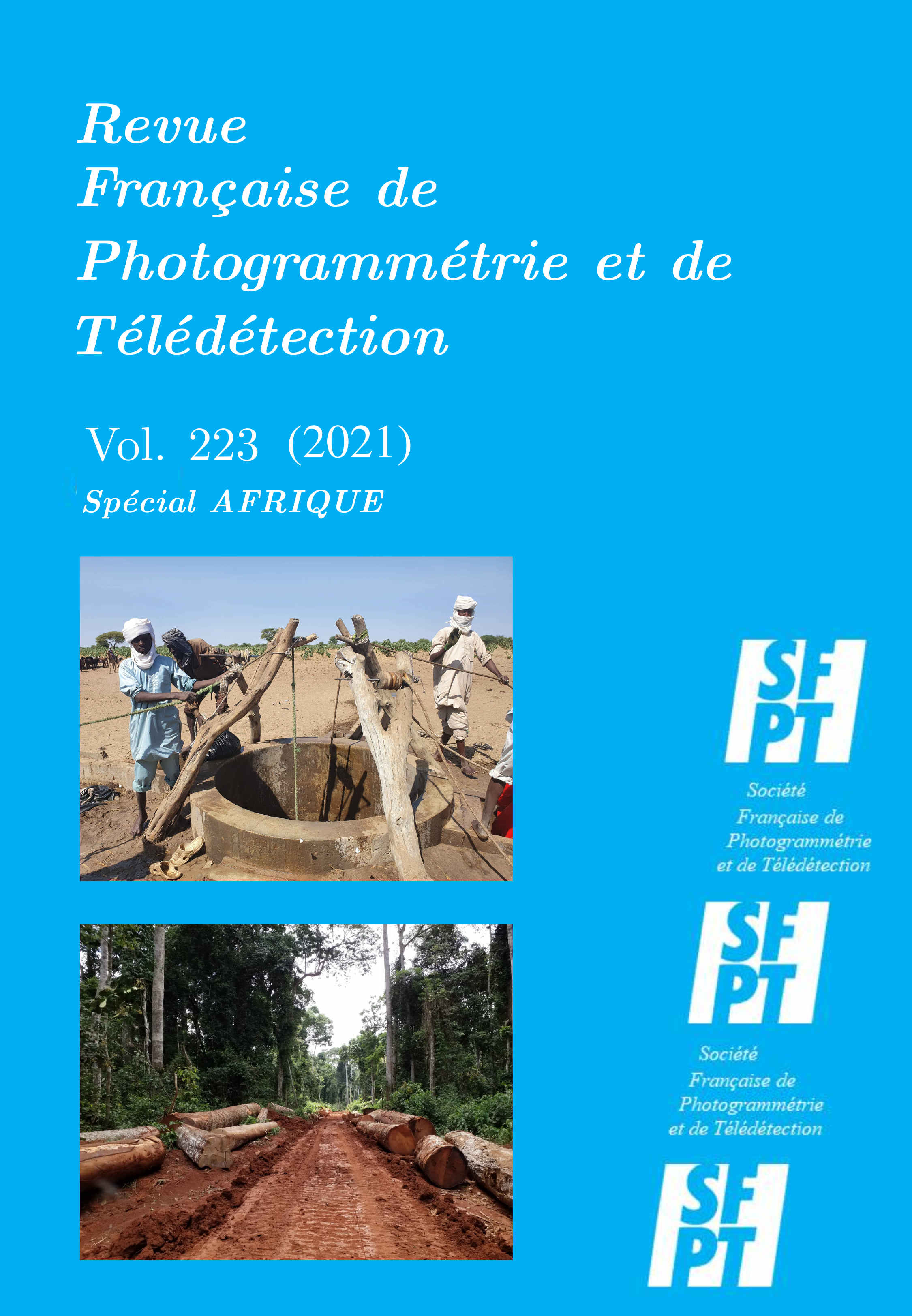Deforestation mapping from satellite imagery in the Alibori department in Benin
DOI:
https://doi.org/10.52638/rfpt.2021.577Keywords:
deforestation, SPOT satellite images, protected areas, degradation, department of Alibori, BeninAbstract
Deforestation and environmental degradation have evolved in response to natural conditions and anthropogenic action. In the Alibori Department, cotton production, essentially extensive and transhumant cattle breeding, logging, Sahelian climatic influences and urbanization are all factors that accelerate deforestation. The objective of this research is to assess deforestation in the Alibori Department using satellite imagery. Planimetric data from SPOT 5 and 7 images of 2005 and 2015 provided by the OSFACO Project have been interpreted and analyzed. Supervised classification coupled with visual interpretation of SPOT images in the QGIS 2.18 software were used. The field control was carried out through 852 GPS points. The average accuracy of the land cover maps is approximately 96%. The results reveal a regression of natural vegetation formations in favour of mosaics of fields and fallow land. Gallery forests, dry dense forests, open forests and wooded savannas and tree and shrub savannas have been converted into mosaics of fields and fallow land and settlements. Village terroirs are more affected by deforestation than protected areas, which occupy nearly 45% of the Department's surface area. The rate of deforestation in the entire Department is 2.84%. The rate is 3.71% in village areas and 0.72% in protected areas. Thus, 37.56% of the Department's surface area is affected by deforestation, including more than 51.27% of village lands and 15.05% of protected areas. In addition, 2.66% of the department is affected by degradation, 1.40% has been naturally reconstituted and only 0.35% has improved. The restoration of these degraded areas is necessary in the Alibori Department, which is considered to be the cotton basin of Benin.
Downloads
Downloads
Published
Versions
- 2022-01-26 (3)
- 2022-01-26 (2)
- 2021-12-16 (1)
How to Cite
Issue
Section
License
Copyright (c) 2021 Mama Djaouga, Ousséni Arouna, Soufouyane Zakari, Sébastien Kouta, Yaya Issifou Moumouni, Benoit Mertens, Ismaïla Toko Imorou, Omer Thomas

This work is licensed under a Creative Commons Attribution 4.0 International License.






